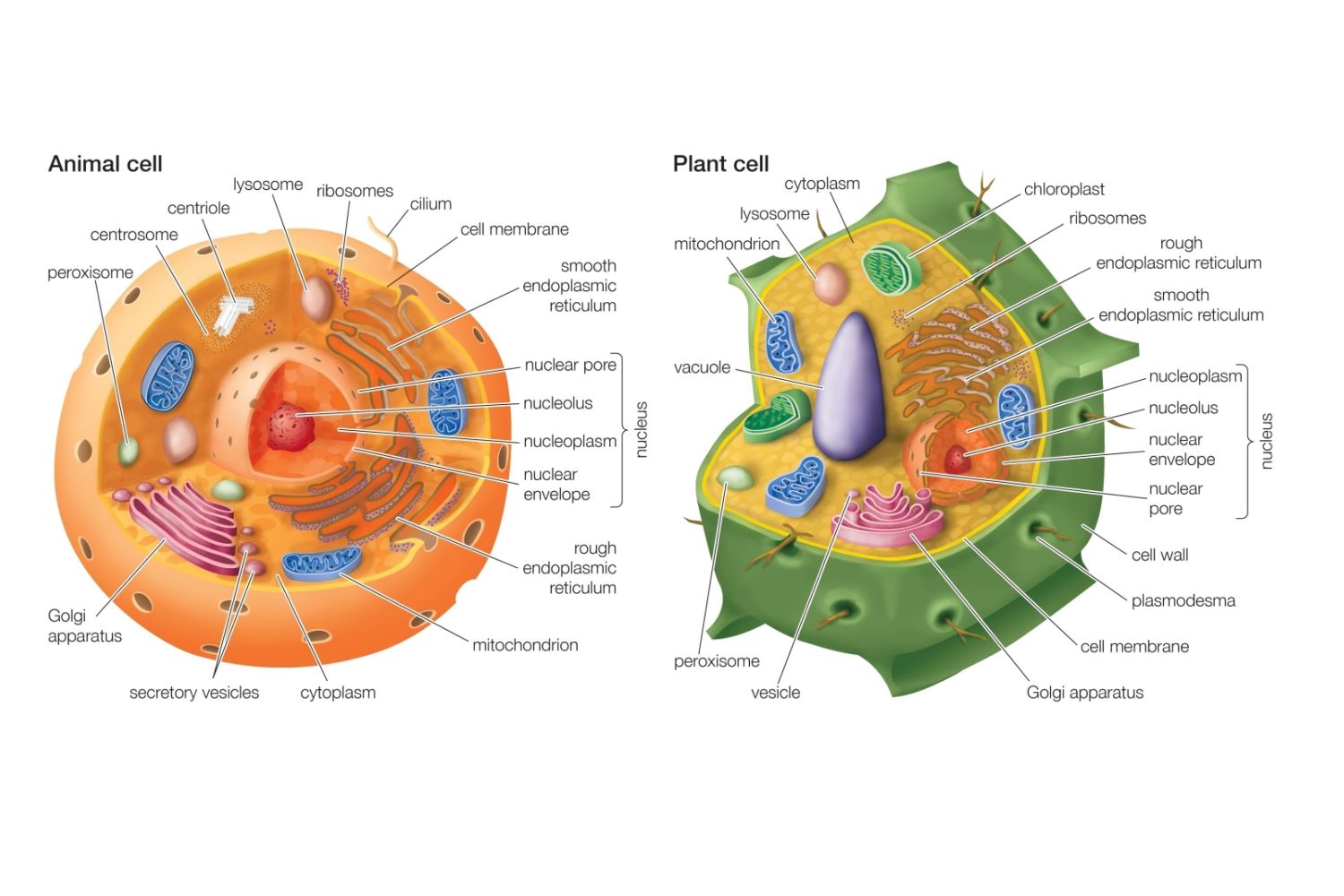
Plant And Animal Cell Ks2 BBC GCSE Bitesize Growth / It is easier to describe these parts
Animal cells are eukaryotic cells, meaning they possess a nucleus and other membrane-bound organelles. Unlike plant cells, animal cells do not have cell walls, allowing for more flexibility in shape and movement. A plasma membrane encloses the cell contents of both plant and animal cells, but it is the outer coating of an animal cell.

Cell Structure and Function Part 1 The Organelles Medical Exam Prep
Animal Cell: Structure, Parts, Functions, Labeled Diagram June 6, 2023 by Faith Mokobi Edited By: Sagar Aryal An animal cell is a eukaryotic cell that lacks a cell wall, and it is enclosed by the plasma membrane. The cell organelles are enclosed by the plasma membrane including the cell nucleus.

Explain the nucleus of a cell with a neat labeled diagram Science Cell Structure and
Labeled diagram of a typical animal cell Nucleus. The nucleus contains all the genetic material in a cell. This genetic information is called deoxyribonucleic acid (DNA). DNA contains all the instructions for making proteins, which control all of the body's activities. Therefore, the nucleus is like the manager's office of the cell.

South Pontotoc Biology Plant and Animal Cell Diagrams
A brief explanation of the different parts of an animal cell along with a well-labelled diagram is mentioned below for reference. Also Read Different between Plant Cell and Animal Cell Well-Labelled Diagram of Animal Cell The Cell Organelles are membrane-bound, present within the cells.

31 Identify And Label Each Part Of This Eukaryotic Cell Label Design Ideas 2020
A cell consists of three parts: the cell membrane, the nucleus, and, between the two, the cytoplasm. Within the cytoplasm lie intricate arrangements of fine fibers and hundreds or even thousands of miniscule but distinct structures called organelles. Cell membrane Every cell in the body is enclosed by a cell ( Plasma) membrane.

Biology 101 Cells Owlcation
Biology Article Plant Cell Plant Cells - Definition, Diagram, Structure & Function The cell is the basic unit of life in all organisms. Like humans and animals, plants are also composed of several cells. The plant cell is surrounded by a cell wall which is involved in providing shape to the plant cell.
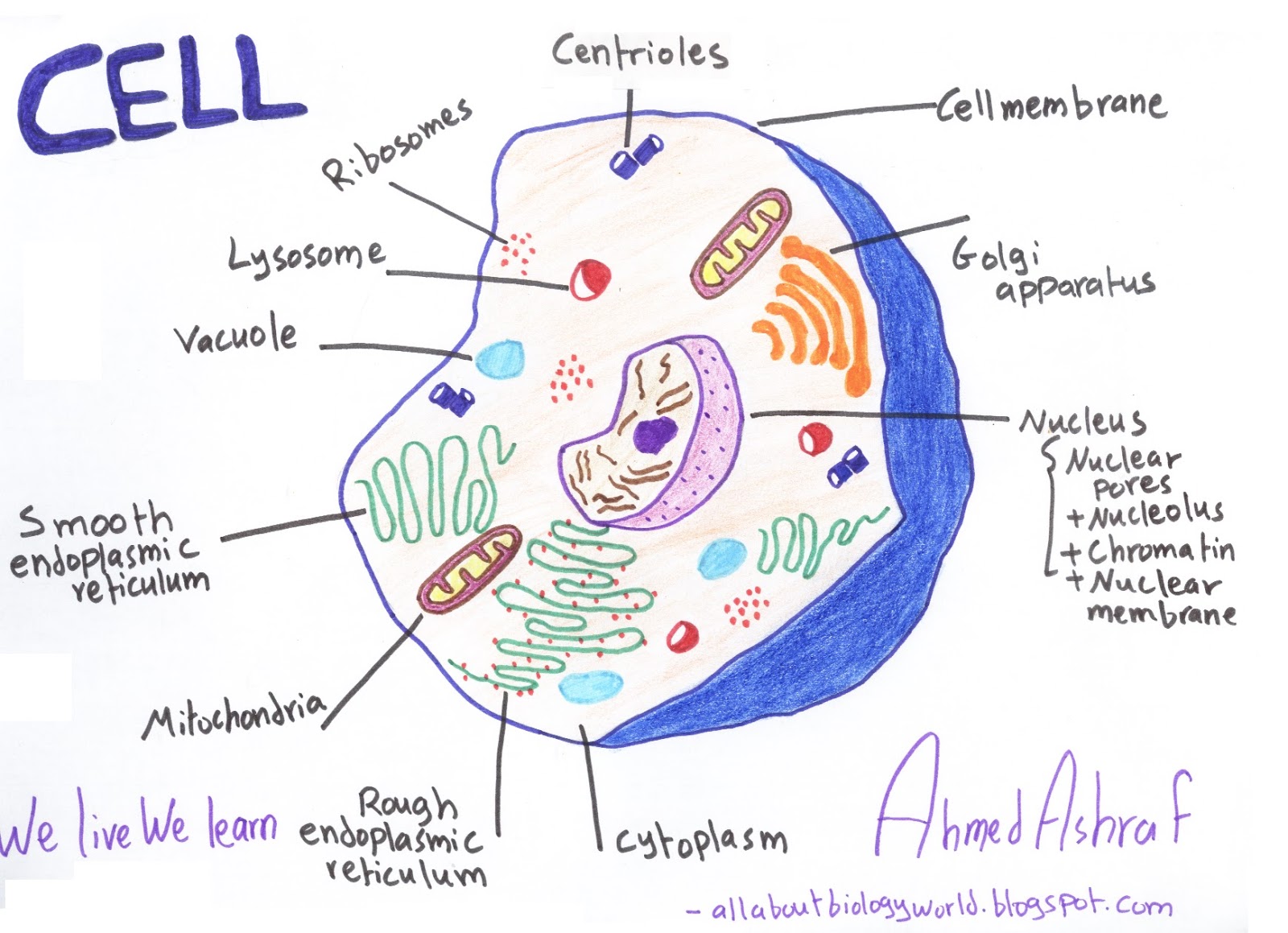
Biology Club Our cells 1 ( structure, function, division, disorder & cycle )
The cell structure illustrations for these diagrams were generated in BioRender. Both diagrams feature a drag-and-drop labelling activity created with H5P here on Learnful. These h5p resources are made available openly with the CC BY license. Plant Cell Structure: Animal Cell Structure:

Organelles, cell growth and cytoskeleton Diagram Quizlet
A Labeled Diagram of the Animal Cell and its Organelles There are two types of cells - Prokaryotic and Eucaryotic. Eukaryotic cells are larger, more complex, and have evolved more recently than prokaryotes. Where, prokaryotes are just bacteria and archaea, eukaryotes are literally everything else.

cell structure Human cell diagram, Cell diagram, Animal cell drawing
Cell diagram labeled Cell diagram unlabeled Learn faster with interactive cell quizzes Sources + Show all What are the parts of a cell? There exist two general classes of cells: Prokaryotic cells: Simple, self-sustaining cells (bacteria and archaea) Eukaryotic cells: Complex, non self-sustaining cells (found in animals, plants, algae and fungi)
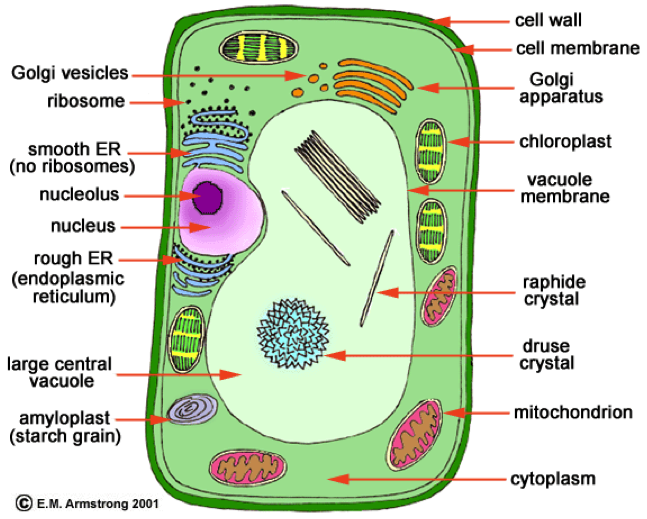
Biology Cell Structure and Functions
10 Comments / Science / By Tim van de Vall Are you learning about animal cells in 5th grade science or biology? If so, you may need to memorize the animal cell, its organelles, and their functions. To help you do this, I've created a printable animal cell diagram. Use this convenient study aid in preparation for your upcoming test or quiz.

Cell Structure
List of 24 Cell Organelles Cell membrane (Plasma membrane/ Plasmalemma) Structure of Cell Membrane Functions of Cell Membrane Cell Wall Structure of Cell Wall Functions of Cell Wall Centriole Structure of Centriole Functions of Centriole Cilia and Flagella Structure of Cilia and Flagella Functions of Cilia and Flagella Chloroplast
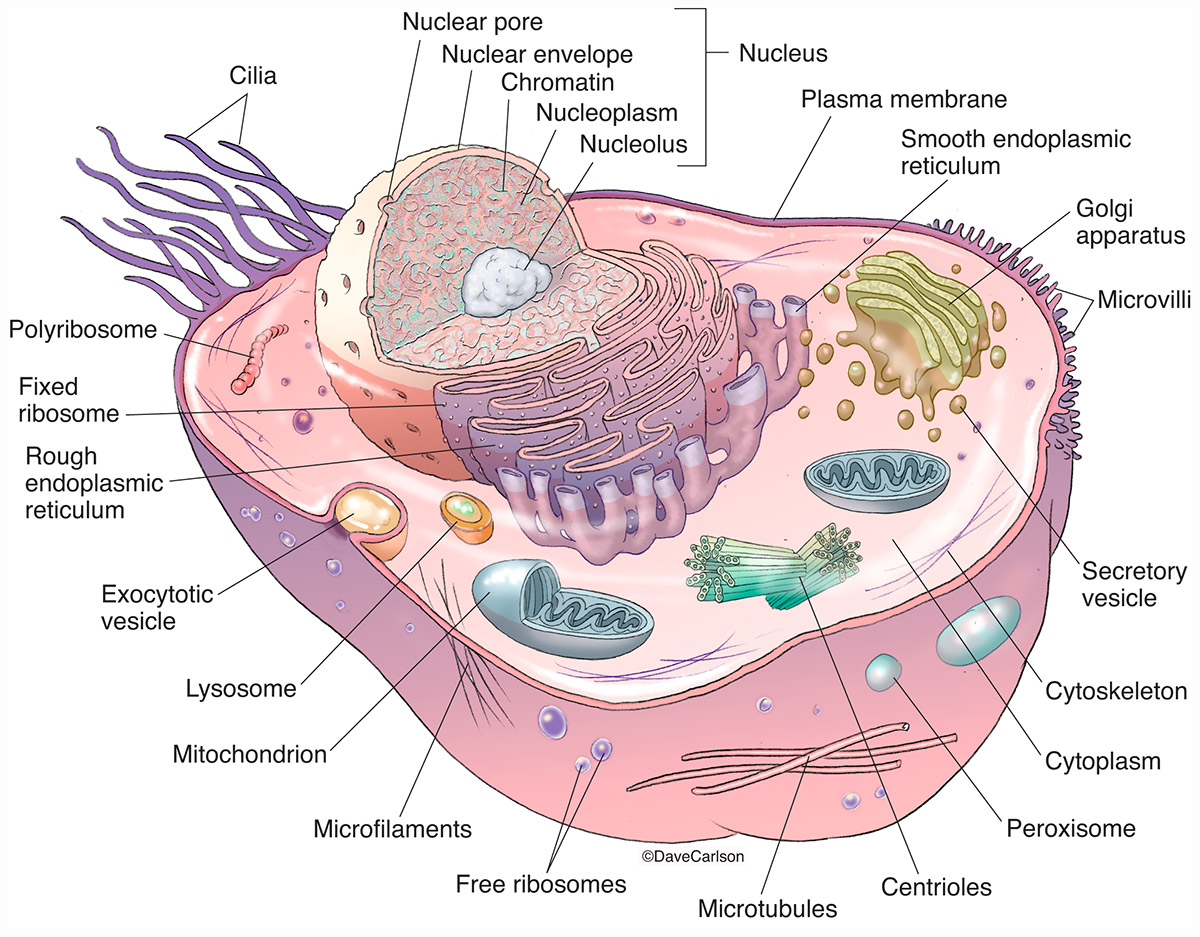
Anatomy Of A Generalized Cell Anatomy Book
Distinguishing characteristics of a plant cell are its cell wall, chloroplasts, and large vacuole. A plant cell is the basic building block of a plant. Plant cells, like all eukaryotic cells, contain a nucleus and other organelles, each with its distinct functions. However, plant cells also possess unique components that differentiate them from.

Plant Cell Diagram Labeled Class 9 Labeled Functions and Diagram
The plasma (cell) membrane separates the inner environment of a cell from the extracellular fluid. It is composed of a fluid phospholipid bilayer (two layers of phospholipids) as shown in figure 4.1.2 4.1. 2 below, and other molecules. Not many substances can cross the phospholipid bilayer, so it serves to separate the inside of the cell from.

Figure 1.1. Eukaryotic Cell Numerous membranebound organelles are found in the cytoplasm of a
The plant cell wall is outside the cell membrane, and it provides structure for the cell. On the left is a circle representing an animal cell. The cell contains many cell parts with different shapes. A small bean-shaped cell part is labeled mitochondrion. A medium-sized circular cell part that has squiggly lines inside is labeled nucleus.
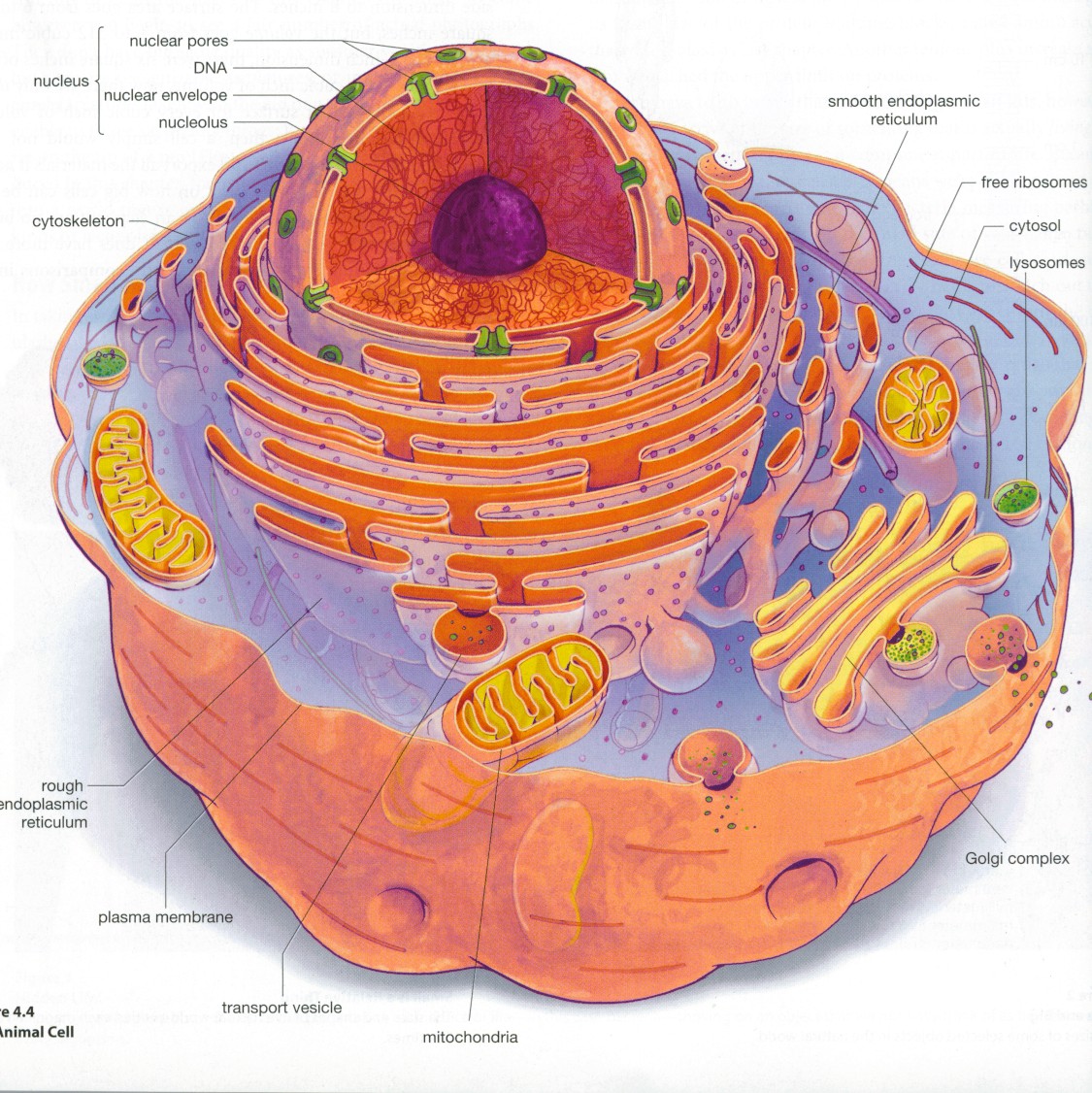
Eukaryotic cell structure diagrams Biological Science Picture Directory
In other words, a diagram of the membrane (like the one below) is just a snapshot of a dynamic process in which phospholipids and proteins are continually sliding past one another.
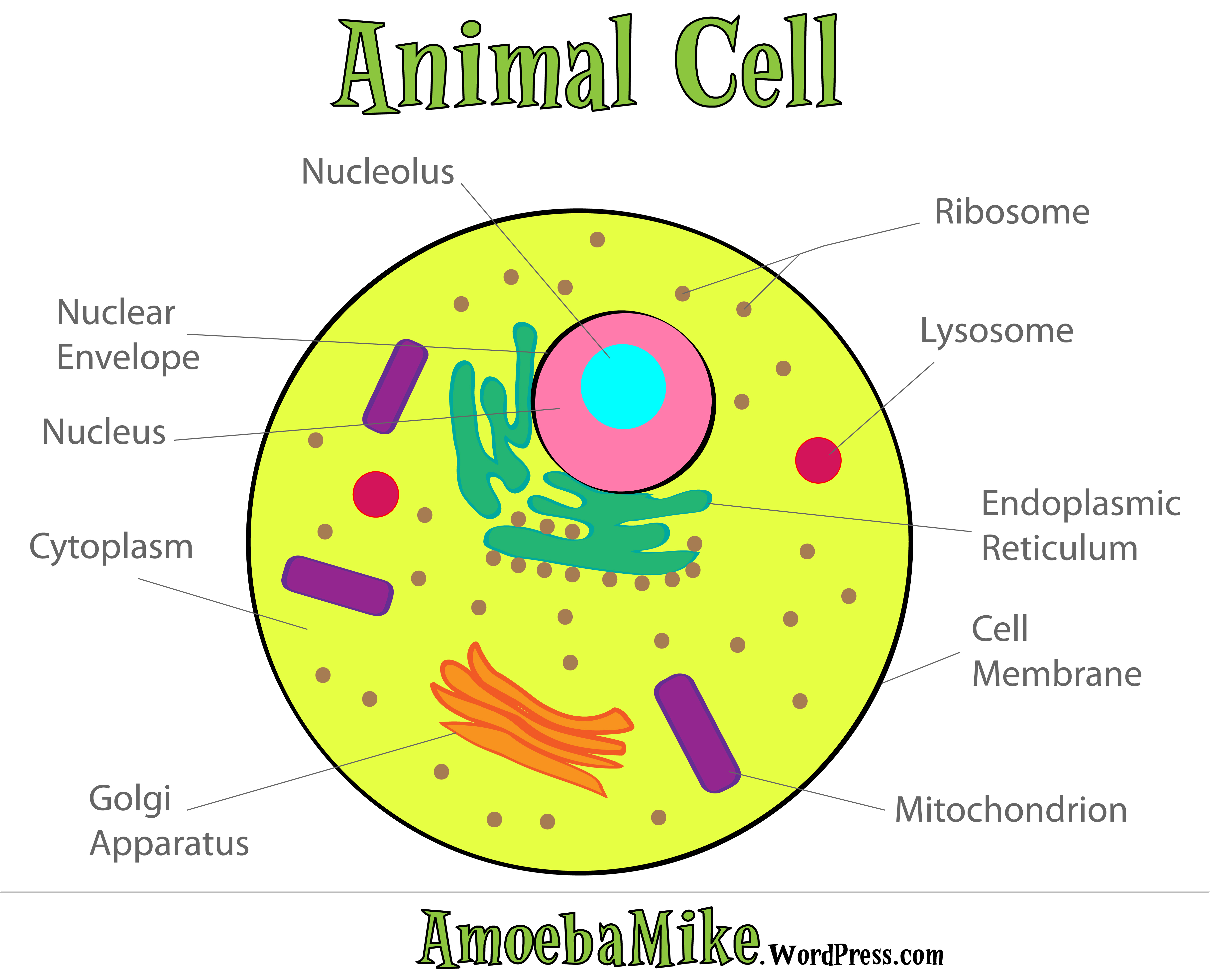
The Cell AmoebaMike
cell, in biology, the basic membrane-bound unit that contains the fundamental molecules of life and of which all living things are composed. A single cell is often a complete organism in itself, such as a bacterium or yeast. Other cells acquire specialized functions as they mature. These cells cooperate with other specialized cells and become.
